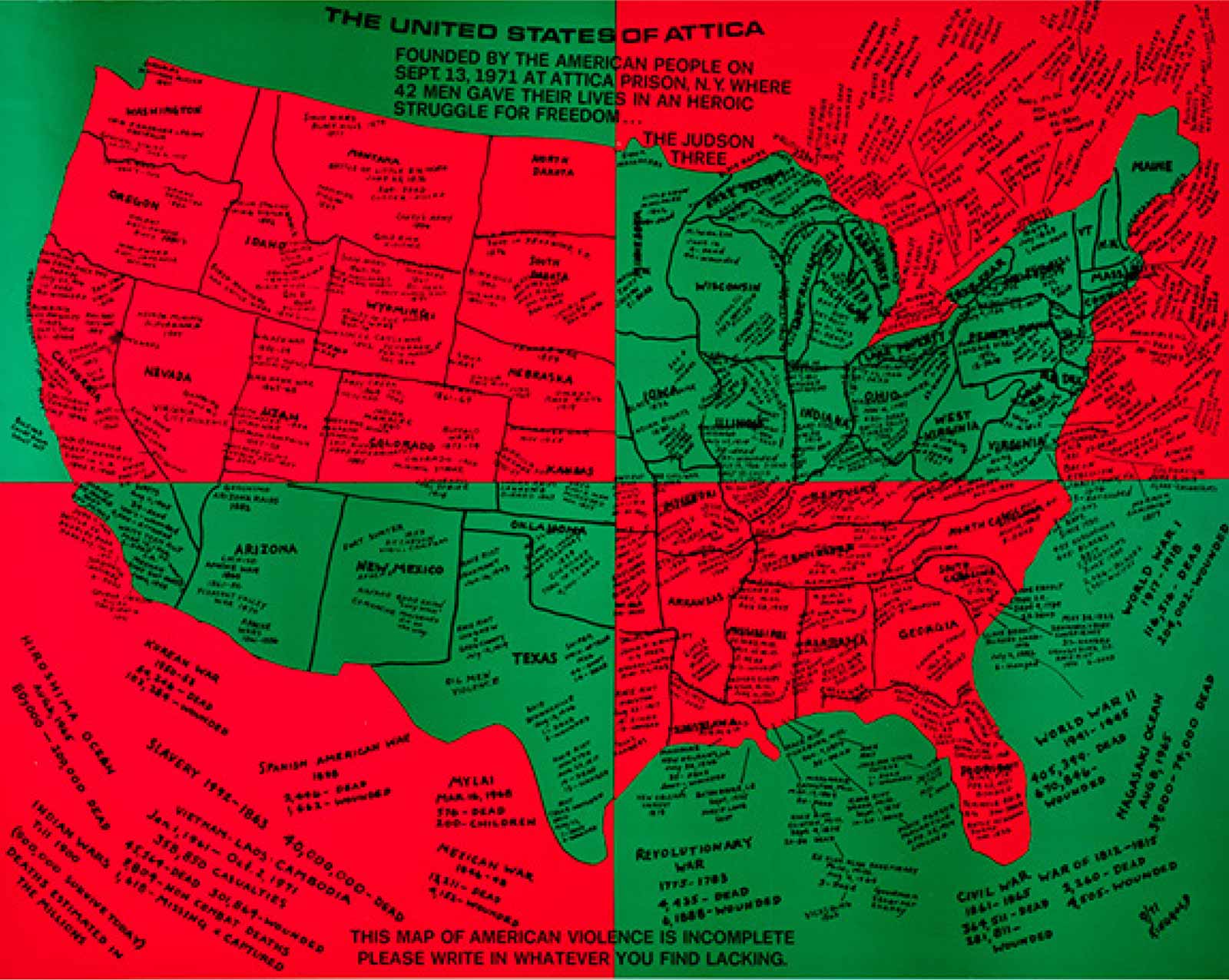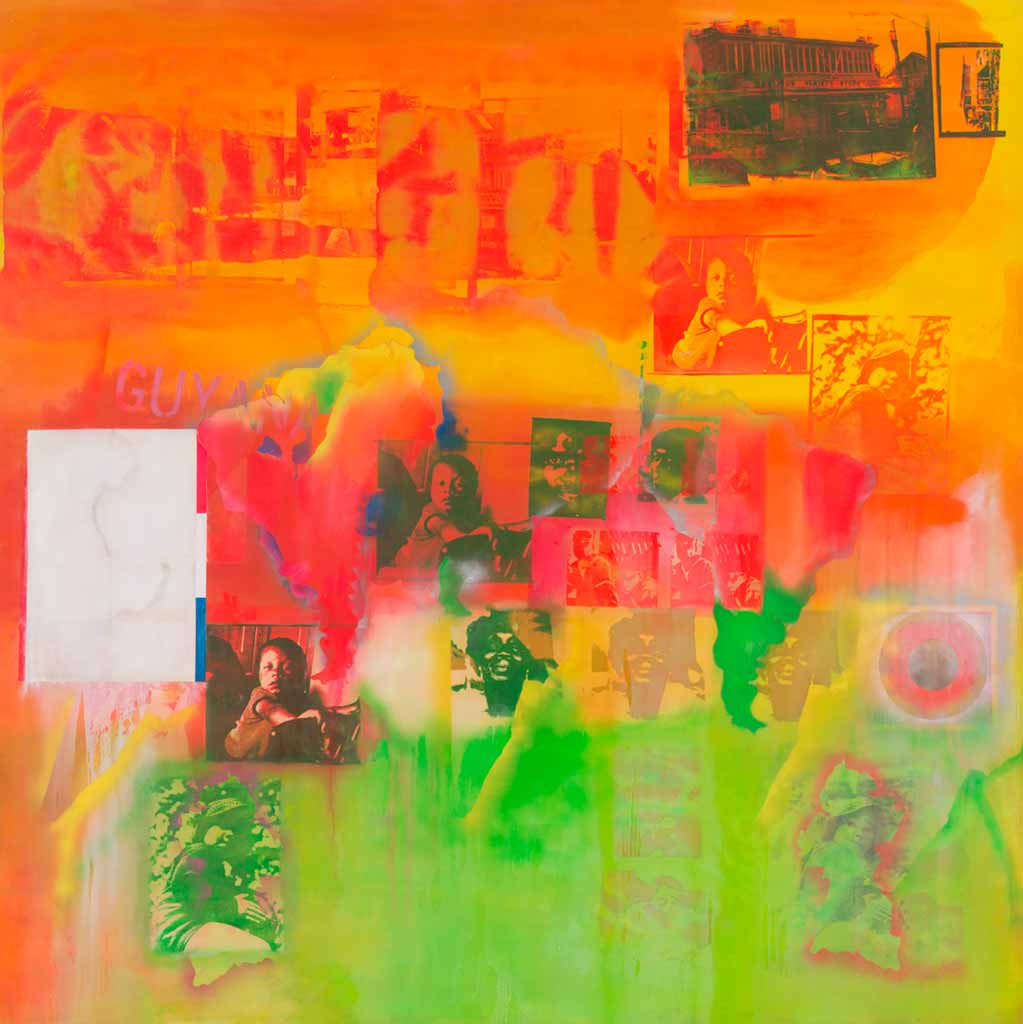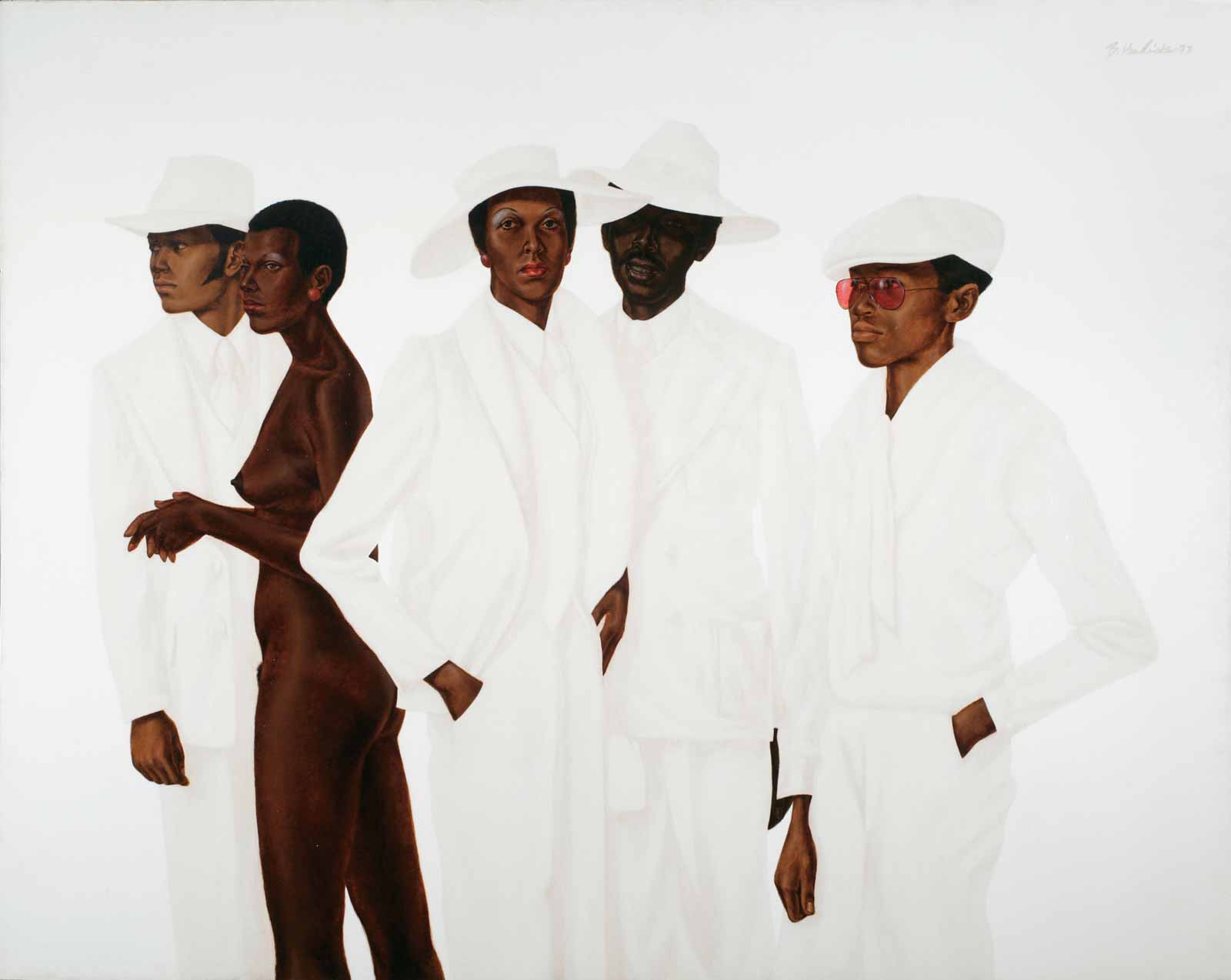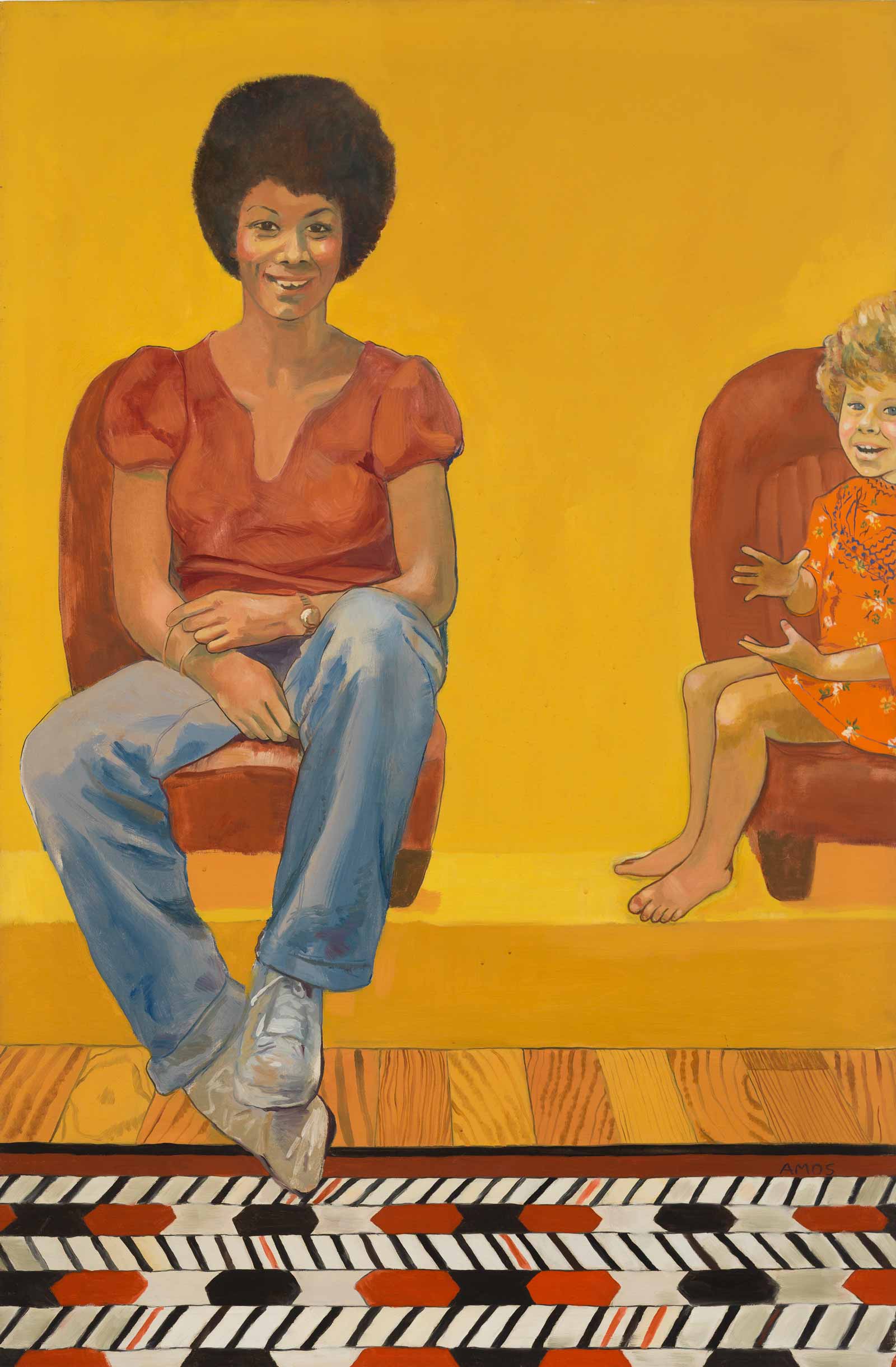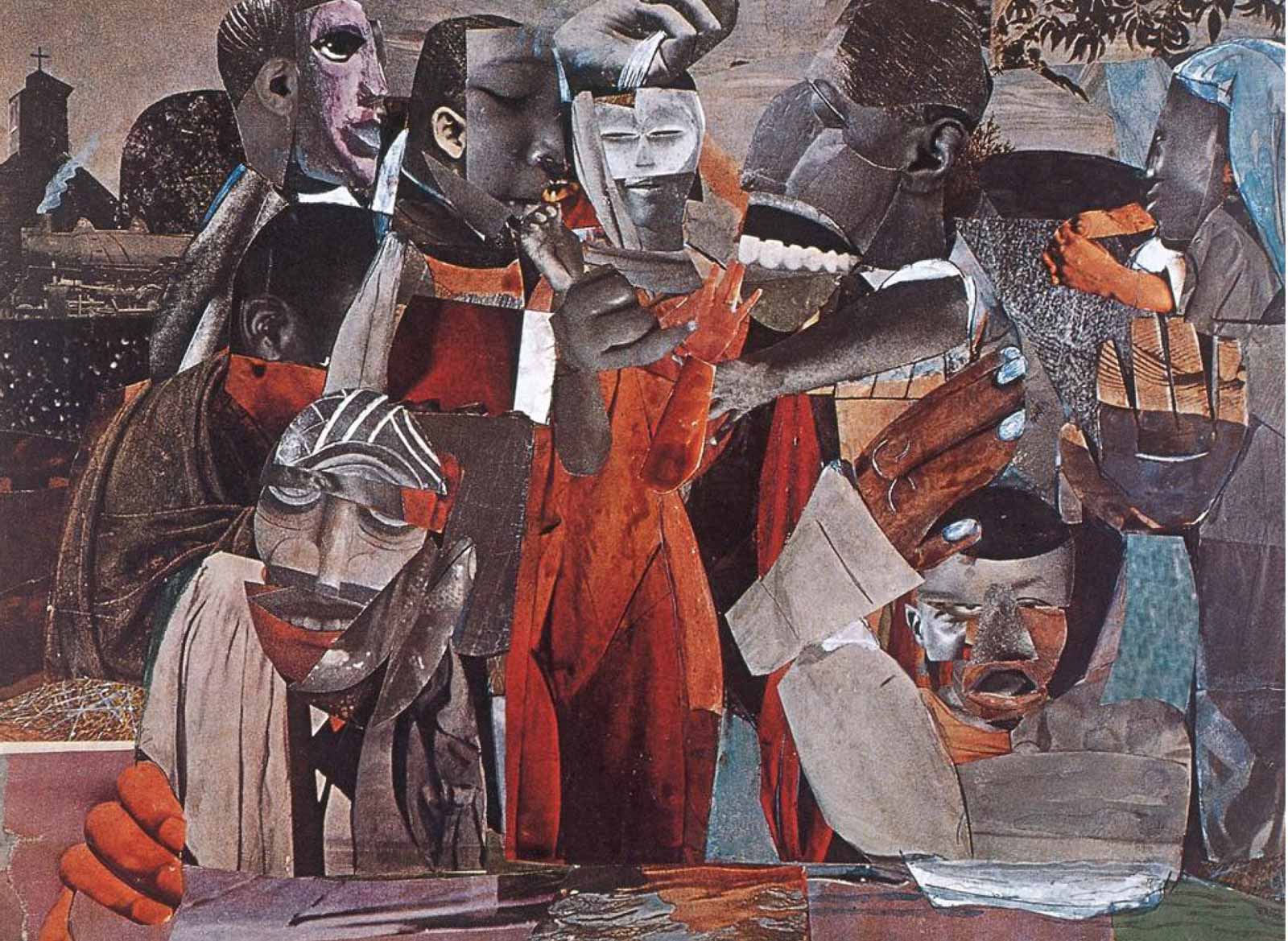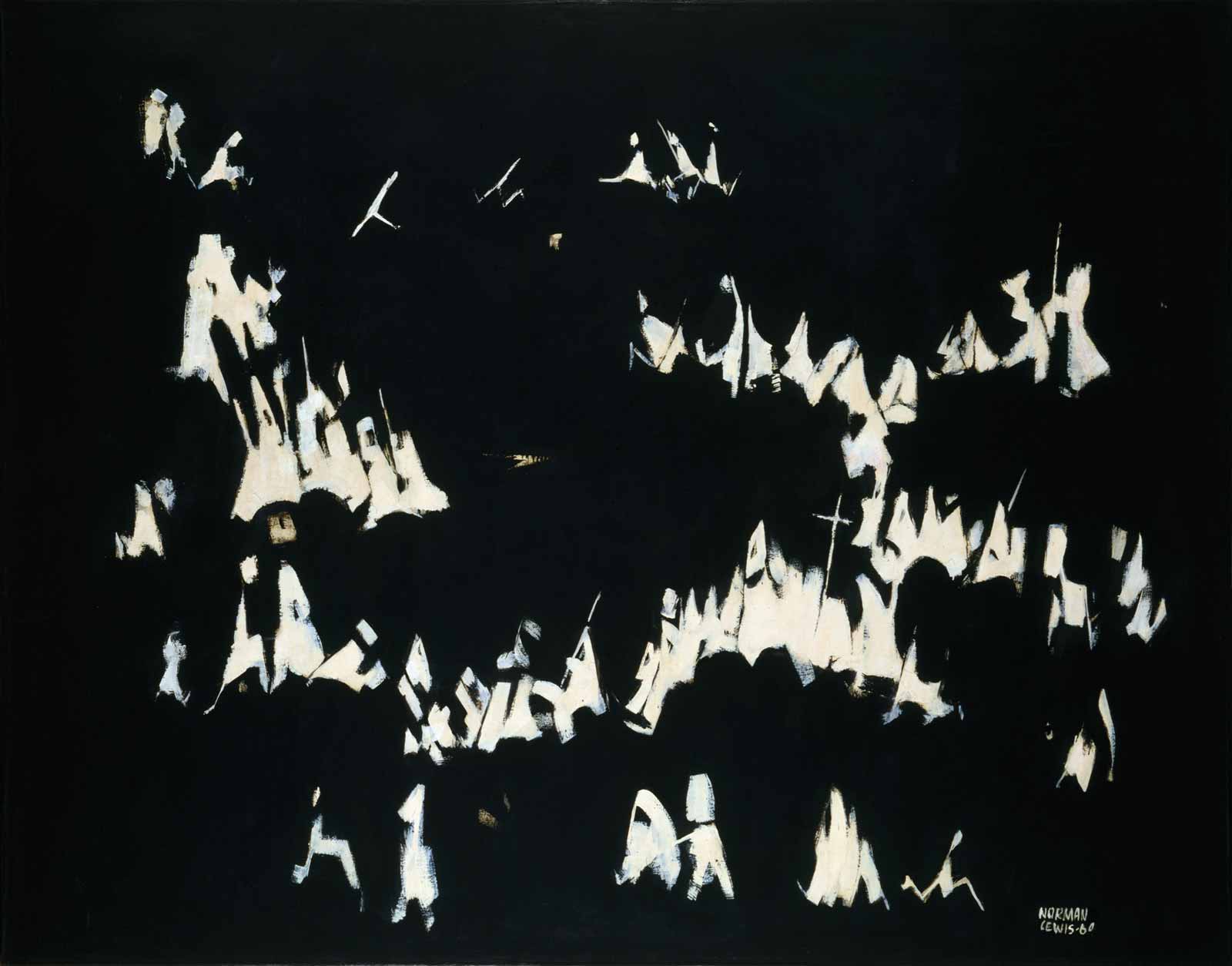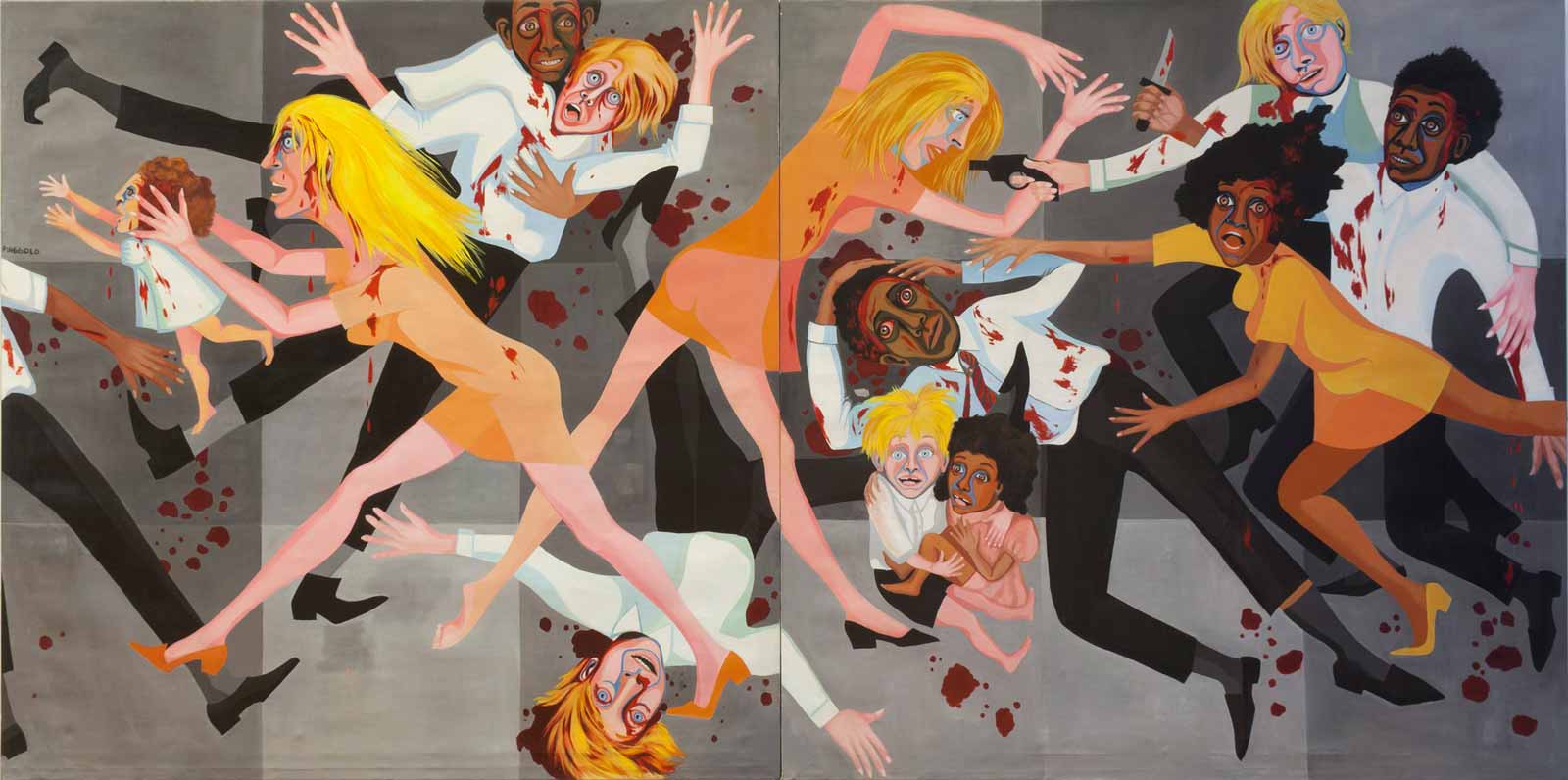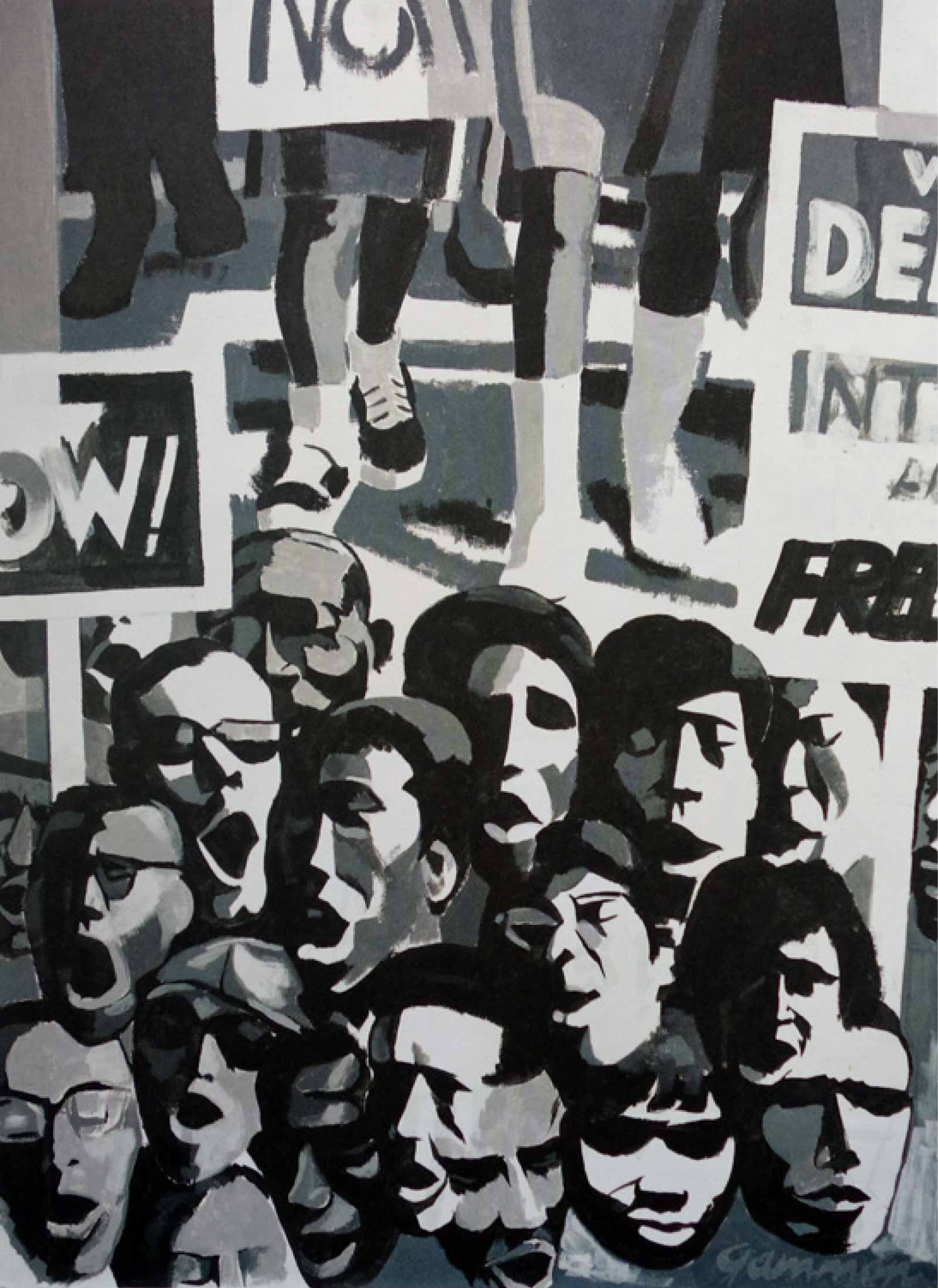A few years ago, when I was a Fulbright Scholar in Britain, students gushed to me about their all-time favorite period in United States history: the heroic civil rights and Black Power era of the 1960s and 1970s. That’s when America was really fascinating, they told me, when issues were clear, and the right Americans made their voices heard. Many Americans feel this way, too. It is true that the civil rights revolution enkindled the concept of black power, which galvanized black artists—playwrights, choreographers, filmmakers, musicians, as well as visual artists—to make work that reflected the ideologies and energies of the era. It really did seem in the 1960s and 1970s that artists could make a difference in the struggle against racial discrimination by joining political activists as a force against white supremacy. Those young people in the UK were right to imagine a time when valiant Americans were outspoken and relatively united. And here I stress “imagine,” because in fact, ideological disagreements had hardly disappeared at that time. Last year, an ambitious art exhibition captured these hopes in visual form.
I come to “Soul of a Nation: Art in the Age of Black Power” with two identities: as a historian and as a visual artist. I am interested in art history: in the machinations of history and memory as they apply to art, and in changes in taste and how they relate to power, money, and cultural visibility. As an artist, I’m attentive to how art is presented and actually looks in physical space. This piece, the first of a two-part review, focuses on the catalogue and how the works and ideas of the exhibition are represented in a book, an object that I hold in my hand in Newark, New Jersey (and an object of great beauty it is—a museum artifact in its own right). In a second piece, I will review the “Soul of a Nation” show at the Crystal Bridges Museum of Art in Bentonville, Arkansas.
Black art is often characterized as solely a statement of identity, as commentary on blackness in world history, or as a critique of racism. Work by black artists is likely to get lumped together as black, regardless of period, medium, and style. This kind of grouping occurred in the 1960s and 1970s, when protests against exclusion prompted white-run museums to attempt to desegregate their collections. Some, like the Newark Museum in New Jersey, had made intermittent efforts to show black work. Others, like the Brooklyn Museum, had a steadier history. Still others had little idea even of where to start. Early museum outreach was prone to grasping at whatever works were easily obtained, then burying them in storage after protests calmed down. What little art criticism there was tended to neglect the visual meanings and value of the art.
“Soul of a Nation,” which originated at the Tate Modern in London, features some 170 works made by black artists between 1963 and 1983. Co-curators Mark Godfrey and Zoé Whitley—who both curate the collection of international art at the Tate Modern—chose sixty-seven artists, living and dead, all but two of African descent: some of sustained prominence (for example, Romare Bearden, David Hammons, and Melvin Edwards); others who surged initially, then fell out of fashion (such as Charles White, Sam Gilliam, Dana C. Chandler Jr., and Kay Brown); and others, again, who produced steadily but have only recently achieved widespread acclaim. In this third group are two artists who experienced late but notable prominence: the sculptor Betye Saar, known for a wide range of styles starting with assemblages, and the vividly figurative painter, the late Barkley L. Hendricks. The cover of the Soul of a Nation catalogue features What’s Going On (1974), a Hendricks painting of emphatically dark-skinned figures, one a nude woman, the others wearing luminous white suits and hats.
Soul of a Nation answers the complaint that black visual artists have been making since the Harlem Renaissance, that their art suffers from a lack of serious engagement, notably compared with black music. To this day, black visual artists are rarely the subjects of lavish catalogues and lengthy personal essays. Soul of a Nation is certainly lavish, and while the catalogue spends time on individual artists, its strength lies in its acknowledgment of the important part institutions play in art’s creation and reception. Within the racist and sexist history of the American art world, black curators, collectors, and galleries have exerted a crucial countervailing influence.
Organized in three parts intended as introductory surveys of the art, artists, and movements of the civil rights and Black Power period, Soul of a Nation is rigorous and encyclopedic. The first section, “Spiral to FESTAC,” presents a history of institutions (voluntary organizations, galleries, art festivals) that showcased black art in the 1960s–1970s. It begins with Spiral—the 1963–1965 New York black artists’ cooperative, made up of all men but the youngest member, Emma Amos—whose founding statement announced that they wanted to discuss “the commitment of the Negro artist in the present struggle for civil liberties,” as well as the art-historical project of documenting African-American artists. Spiral dissolved in three years, as the artists did not agree with Romare Bearden, one of its founders, that members should embrace a uniform aesthetic. Older members, such as Hale Woodruff and Charles Alston, hesitated before making art they considered propaganda.
In addition, the question of how tightly to embrace the idea and the imagery of Africa also generated controversy in Spiral, as it did among other black people, including artists throughout the country. Spiral continued to inspire the artists involved and those who followed. Other collectives and organizations, like the Black Panther Party newspaper, the Studio Museum in Harlem, AfriCOBRA, and The Black Photographers Annual, are addressed as part of this survey. The section closes with the 1977 FESTAC festival in Nigeria, at the time the largest pan-African cultural gathering, an event that exemplified black American artists’ embrace of a diasporic identity and identification with a “‘trans-African’ ethos: a prevailing African sensibility that remained identifiable despite geographic distance and diasporic dispersal.”
The second section’s two essays address abstraction and figuration. “American Skin: Artists on Black Figuration,” by Zoé Whitley, begins with Hendricks and moves through a thoughtful survey of figurative artists like Faith Ringgold, best known for her narrative quilts, and the sculptor and graphic artist Elizabeth Catlett, both of whom created works that were explicitly political. Ringgold’s American People Series #20: Die (1967) shows bloodied black and white people fighting with one another, arms and legs splayed, as terrified children look on. Catlett’s Black Unity (1968), a mahogany carved fist with two faces on the back, illustrates her interest in making art, as she said, “to service black people—to reflect us, to relate to us, to stimulate us, to make us aware of our potential.”
“Notes on Black Abstraction,” by Mark Godfrey, covers ground that will likely be unfamiliar to many, as abstract black art has long been ignored by museums and critics in favor of figurative representations of black life. This essay begins with the shaped canvases of Al Loving, who in 1969 became the first black artist with a solo show in the Whitney Museum of American Art. The work of the Abstract Expressionist painter Norman Lewis, long ignored but recently selling well, and of the photographer Roy DeCarava—known for his pictures of Harlem in the mid-twentieth century, but who also experimented with light, shadow, and abstraction in the 1960s—is considered and luxuriously illustrated.
The third section, entitled “Recollections,” focuses on figures who were integral to the fostering and reception of black art during the Black Power era. While black art history goes back to the Howard University philosopher Alain Locke’s 1925 concept of African “ancestral arts” and the Howard artist James A. Porter’s Modern Negro Art (1943), the 1960s–1970s produced an outpouring of new commentary by art critics, historians, and curators such as David Driskell, Richard J. Powell, Deborah Willis, Lowery Stokes Sims, Cheryl Finley, and Camille Billops. In Now Dig This!: Art and Black Los Angeles, 1960–1980 and South of Pico: African American Artists in Los Angles in the 1960s and 1970s, the art historian Kellie Jones (thanked, but not quoted here) laid the groundwork for art of the Black Power era and for Soul of a Nation.
“Recollections” offers invaluable original, first person reminiscences by many of these artists, curators, gallerists, and publishers. The painter Samella Lewis founded The International Review of African American Art in 1976 to publish serious art criticism about black artists who were otherwise ignored by mainstream journals. David Driskell, also a painter, curated the pioneering 1976 exhibition “Two Centuries of Black American Art: 1750–1950,” a cornerstone of black art history. In 1976, Linda Goode Bryant founded the 57th Street gallery Just Above Midtown, which showed black artists such as the painter Palmer Hayden, photographer Dawoud Bey, and performance artist Senga Nengudi. Even today, with the exception of the small minority of internationally prominent artists with major gallery representation, most artists, especially black artists, lack the means to widely share their work.
Advertisement
The British students I met on Fulbright imagined black voices speaking as one against American racism. In a sense, Soul of a Nation represents a composite voice, made up of a wide range of artists, curators, and writers: the diverse soul of black America at the time of Black Power. The title also seems to reference the fact that black nationalism regarded black America as a nation on its own. But “nation” in Soul of a Nation also implies that the art of this period confronts and concerns all Americans.
Near the beginning of the catalogue, Darren Walker, president of the Ford Foundation (a major funder of the project), writes that the “exhibition not only reflects on a particular period in American history, but reaffirms the integral role of art in the fight for social change.” Walker hopes that Soul of a Nation will provide insight into our past and inspire “empathy and action in the days to come.” The exhibition is explicitly intended to serve as a guide to art institutions seeking to desegregate their collections by race and gender, an issue that remains relevant today. Expanding what is seen and accepted as “American art,” then, is a fundamental target of the show. Soul of a Nation itself is an effort, supported by major institutions, to break down habits of exclusion: to reshape American art history by increasing the visibility of black artists then and now. But no single definition of black art can usefully embrace the work of contemporary artists as disparate as Kara Walker, Adam Pendleton, Njideka Akunyili Crosby, Charles Gaines, Martin Puryear, and Joyce Scott. Race alone does not serve as a useful category in visual art. Soul of a Nation takes a snapshot of a different time, a moment when the work of black artists was most easily defined by race, and when black work was most frequently and emphatically black. It omits some work from the period that doesn’t fit this criterion, such as the landscapes of Barkley L. Hendricks and Hale Woodruff. Nonetheless, the exhibition surpasses the limitations of twentieth-century museums by including a great deal of work that does not shout its racial identity.
For all its capaciousness, the catalogue suggests that the exhibition should more properly be titled “Soul of the US-American Nation,” or even “Soul of the US-American Nation As Seen from Chicago and the Coasts.” The art of Black Power in its British, West Indian, and South American manifestations is all but absent here, even though, as Cheryl Finley has noted, British curators have taken on the Black Arts Movement in exhibitions like Nottingham Contemporary’s “The Place is Here” last year. Within the US, provincial artists of the civil rights era, like Herman Kofi Bailey in Atlanta, remain invisible, despite his service to the Student Nonviolent Coordinating Committee as a graphic artist.
In our own Black Lives Matter times, when police brutality, racial discrimination, and voter suppression still disfigure American democracy, the issues that artists featured in Soul of a Nation sought to confront are very much still relevant. In trying to understand our current moment, we might look back to the American artists who worked to make sense of their nation in turmoil through creation, mutual support, and collective action.
Soul of a Nation: Art in the Age of Black Power is published by Tate Publishing and distributed by Artbook, D.A.P. The exhibition is now at Crystal Bridges Museum of American Art in Arkansas through April 23, and will be on view at the Brooklyn Museum from September 7 through February 3, 2019.


